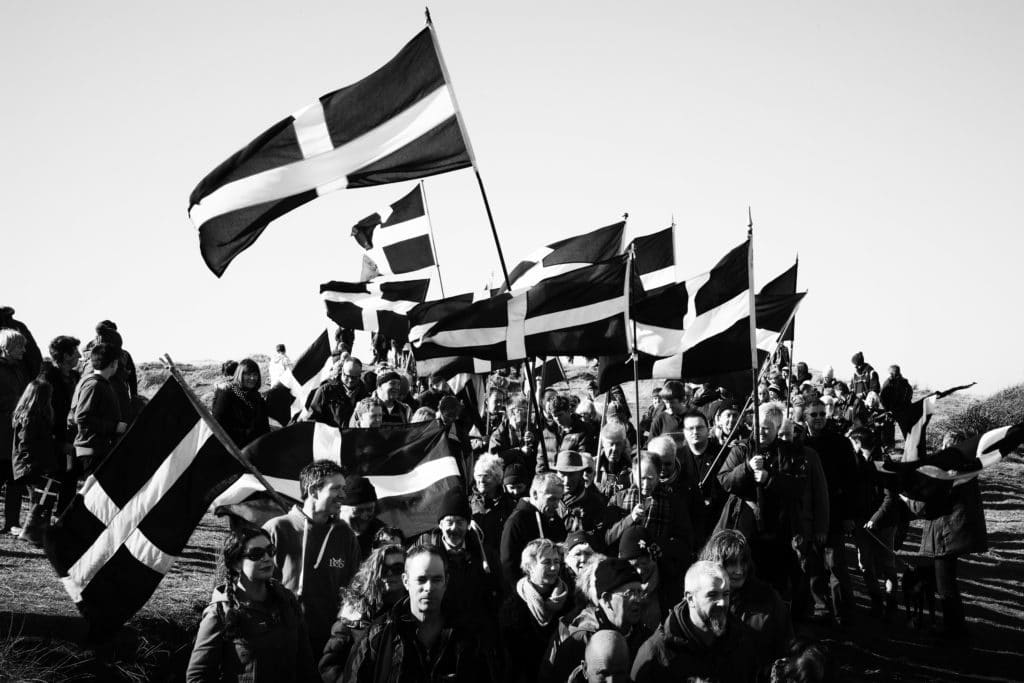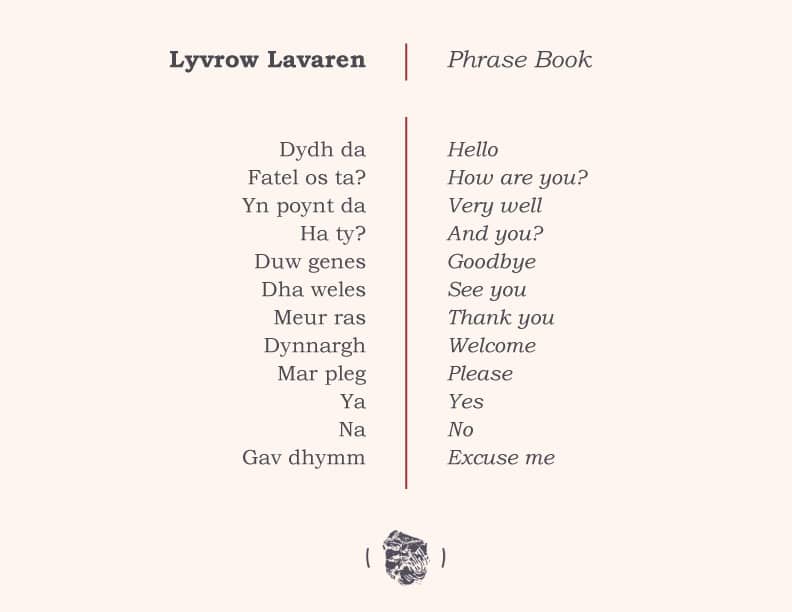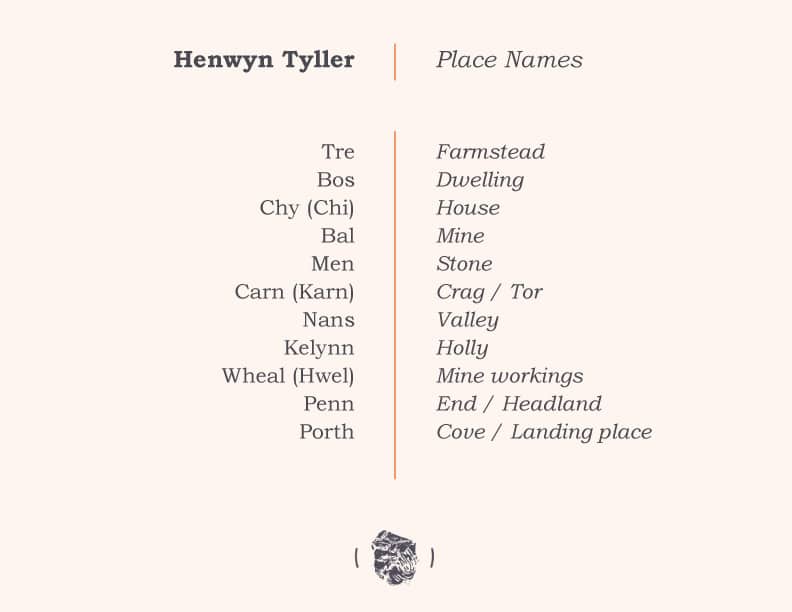Cornish Language
Our culture, language, landscape and heritage are wholly intertwined. To protect and preserve one means to protect and preserve the others.

❝ Cornish culture is on every signpost, it is there in the way that we greet and regard each other.
It is in the silent monuments of our landscape, it is in song, dance, drink and meal. It is in the voices that once echoed from a thousand feet underground. It is in the vast reserve of legend and folklore, and in the creativity and ingenuity of Cornish artists, writers, poets, boatbuilders and engineers. It is present in the rhythmic straining's of pilot-gig oarsmen and women.
It is in the decorations that adorn the trees around our many holy wells, it is present in the hilltop solstice bonfires and dances, it booms out in the breathtaking harmonics of our massed community choirs. It is in every ancient or revived festival from Land’s End to the Tamar.
It is in the lusty enthusiasm given to public renditions of Trelawny, Camborne Hill and other truly Cornish anthems. It’s there in every Yeth an Werin. It’s there in our unique brand of humour. It’s there in our churches, chapels, pubs and knackt bals. It’s in every Cornish home and every Cornish gathering.
It is the iconic flag of St Piran that now flies proudly everywhere.
It is subtle, developed in its own way, and at its own rate, a gradual way that has become accepted ingredients of the landscape itself. An effect rather than an impact. ❞
Kernow Bys Vyken!
Steeped in history and legend, the Cornish (or ‘Kernewek’) language is one of the oldest tongues of Britain – and more important now than ever before.
While rooted in Celtic origins, today, just a few hundred fluent speakers remain as a fierce battle rages to save and revive this fundamental piece of Cornish culture.
But, from introducing it through education and workshops to hosting events across the region, many strive on with the hopes of giving it a thriving future.
And it’s been a slow battle; even as UNESCO revealed the language was no longer extinct in 2010, it still remains ‘critically endangered’.
Right here in West Cornwall, though, this ancient tongue was never forgotten. Even when it seemed to be lost with the rise of the Tudor dynasty, the far west alone clung onto this precious fragment of Cornish culture for generations to come – and became home to the last truly native Cornish speaker.
And, today, Kernewek has become a symbol – a sign of a remarkable and resilient people who continue to pioneer their own futures, shape this landscape’s cultural identity and keep their language alive!
Cornish Phrases and Place Names
Join the Kernewek (Cornish language) revival as you journey and adventure on the Arvor An Sten (Tin Coast). Decipher our place names and share in our spoken word; feel a part of Cornwall like never before.
Phrases
To get you started, we’ve made a list of a dozen Cornish words that you might hear or like to try whilst you visit.
Keen to learn more? Brilliant! The team at ‘Go Cornish’ have plenty more to share with pronunciation and audio to hear how the words sound. Go Cornish.
Place Names
Anticipate what you might find when wandering the winding lanes of this land by discovering the meanings of our place names and the features that they describe.
Here are some ‘sounds’ you may have already stumbled across that still sing the ageless repertoire of our language:
For a much deeper delve into local place names, their Cornish translations/origins and meanings get delightfully lost in the detail of Akademi Kernewek’s Directory of Cornish Place Names
Come and love this place. Be fully present. Honour its past, love its present, preserve its future.
Photo: Perran Tremewan
Stories
Evoke your sense of belonging with our collection of stories told by the people who are born to and drawn to the Tin Coast.
Visitor Charter
Wherever we go, and whatever we do, we have an impact. Our Visitor Charter gives you 5 simple ways to make sure your visit to the Tin Coast is a positive one.
Photo: St Just Camera Club
Events
What's On in our community where music, art, celebration, folklore and performance is at the beating heart of Tin Coast life.




